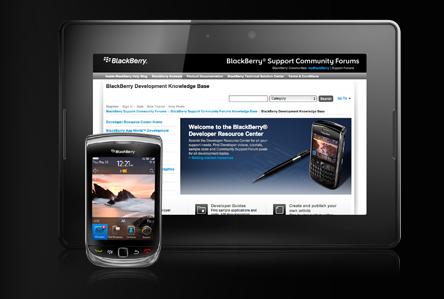RIM PlayBook BlackBerry Tablet

RIM’s PlayBook tablet is a good effort, if you have a BlackBerry phone and don’t need many apps
Good hardware choices
The PlayBook relies on a 1GHz dual-core processor paired to 1GB of RAM. With that sort of hardware under the hood, applications and the Web operate without a stutter, although some of the former occasionally took a notable time to load. The operating system is particularly multitasking-happy, capable of preserving multiple open apps in the background.
Paired with Flash support, that presents some potential challenges for battery life. The device also becomes noticeably warm within its first few minutes of operation—not “fry an egg on the back” hot, but definitely noticeable.
The tablet’s 5-megapixel camera is leaps and bounds better than the ones found in BlackBerry phones. RIM’s engineers have included a neat feature: If you hold down the “-” and “+” volume buttons on the top of the device, the PlayBook takes a screen-capture. With more native communication apps coming at a later date, it may even be an easy process, at some point, to actually port those images from your tablet onto another device.
Handling files and apps
Loading files from a PC onto the PlayBook is a snap, via USB. Within 10 seconds, I had managed to drag several PDFs and documents from my desktop onto the device, along with a selection of music.
The PlayBook seems to handle many everyday functions — including document viewing (via a well-rendered Adobe Reader app) and editing (via Word To Go, Sheet To Go and Slideshow To Go) — with ease. The PlayBook’s virtual keyboard is roughly on a par with its Android and iOS equivalents; if you’re familiar with those, this one will pose little trouble. There’s no Swype yet, though, for those who like running their fingers around a keyboard as opposed to tapping.
The operating system looks and feels polished, but comes with occasional annoyances. While the screen itself is very touch-sensitive, various apps (particularly Adobe Reader) sometimes have a hard time recognising a swipe or tap. One PDF document I tested seemed to have a mind of its own, sometimes flipping through two or three pages in response to a single leftward flick, other times kicking me back to the home screen. The Bing Maps app is very neat, but sometimes requires a bit of wrestling. Presumably future updates will iron out some of these minor kinks.
Much has been made in early reviews about RIM’s lack of apps for the PlayBook platform. This is indeed a problem, although App World is populated with enough to give all but the most app- and game-hungry user a start on populating their device. If and when Android apps come to RIM’s ecosystem (an Android app player is planned) , that could radically change the game — but for now, anyone seriously considering a PlayBook purchase probably shouldn’t put apps at the top of their list.
The PlayBook is two different tablets
In essence, the PlayBook is really two devices. If you own a BlackBerry, it’s the rough draft for a tablet that could eventually serve as a viable player on the tablet market. If you’re BlackBerry-free, then your decision-point on whether to buy a PlayBook should probably come a few months down the road, once RIM introduces more functionality and irons out a few kinks. The PlayBook’s lack of 3G connectivity may not matter to many users, particularly those already interested in Wi-Fi-only tablets.